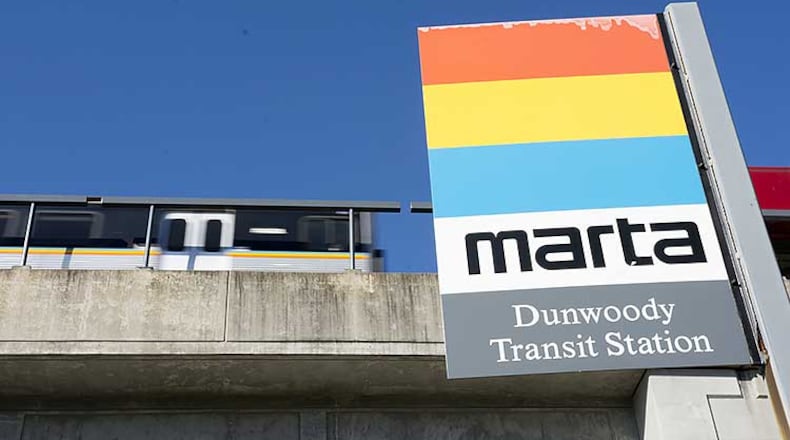By adopting an expansive portfolio of new rail lines, bus routes, and major transit system improvements, the MARTA Board on Thursday took an historic stride to ensure the city of Atlanta remains strong and is moving forward for decades to come. After more than two years of intensive planning, public outreach, and often-spirited debate, the More MARTA Atlanta program is officially underway.
The board’s recent vote is a signal moment that promises to fundamentally redefine how people move around Atlanta – and beyond. The benefits of the More MARTA program are also likely to ripple well outside the city limits and have profound impacts on mobility, job creation, and economic development across the greater metropolitan region.
Inspired by the successful, transit-only referendum to raise the existing one-cent sales taxes by a half-penny in 2016, More MARTA Atlanta represents a $2.7 billion investment in our collective future. The program will create a diverse, layered menu of transit vehicles and technologies that connect key job centers, neighborhoods, medical facilities, grocery stores, and schools while supporting economic opportunities and equity for all Atlantans.
The program reflects the mandate of residents who are demanding better transportation options and mirrors the “One Atlanta” vision for the city articulated by Mayor Keisha Lance Bottoms, who has endorsed the list of transit projects. The highlights of More MARTA include:
- More than $600 million for high-capacity transit in southwest and southeast Atlanta, including accelerating light-rail investment on Campbellton Road and bus rapid transit linking Summerhill to downtown
- $570 million for the Atlanta Beltline corridor, which amounts to 61 percent of the plan for the Beltline and Streetcar adopted by the Atlanta City Council
- $553 million for light-rail linking the Atlanta University Center to MARTA's heavy-rail system, Georgia State University, and the Beltline, and the Streetcar
- $250 million for the Clifton Corridor line, with another $100 million contingent upon securing full local funding for the project
- $238 million for improvements to the current bus system, including new buses, more shelters, more service and new circulator routes
- $200 million to dramatically improve the customer experience at our rail stations to attract new riders, including better pedestrian access, ADA enhancements and amenities inside the stations.
In addition to being the largest investment of its kind in decades, the More MARTA program also heralds a timely shift in how we think about transit. The time has come to broaden the public dialogue around “mobility.”
Whether you’re riding transit, cycling, walking, driving, ride-sharing or hopping on a scooter – our community ought to be forward-looking in order to seamlessly integrate traditional modes of commuting while also being strategically positioned to integrate and embrace the next wave of disruptive technologies on the horizon. As the largest and oldest transit provider in the Southeast, MARTA must constantly adapt and evolve the way we do business.
While we are grateful for the overwhelming public support for the program, and the milestone vote by the MARTA Board, we realize there will be challenges.
For starters, the $2.7 billion in projected sales tax revenues over 40 years must be leveraged with other, still-unidentified funding sources to maximize the program’s reach and effectiveness. The More MARTA program should not be the last and only opportunity to invest in better transit options.
Changing demographics will also play a role in transportation decision-making, going forward. By 2022, metro Atlanta is expected to surpass Philadelphia as the nation’s eighth largest metro area. In the next 20 years, the region’s population is expected to grow to eight million residents, further stressing our transportation network.
Also, as the state of Georgia, other cities and counties move closer to making new investments in transit, the need for coordination and collaboration to provide seamless connections for riders has become increasingly critical.
While facing these uncertainties head-on, MARTA won’t be waiting years to start turning dirt on projects. Our goal is to make short-term transit system enhancements that are included in the More MARTA program that will propel us to longer term gains.
As we look forward to rolling out the More MARTA program, it’s instructive to remember how far we’ve come. When construction work on MARTA’s rail system got underway more than 40 years ago, former Atlanta Mayor Sam Massell said he was often questioned by impatient constituents who wondered when the massive mass transit project would be finished.
Massell had a prescient answer, one that still rings true four decades later as we embark on the next chapter in our history.
“I hope (MARTA) is never finished,” he’d say. “It should keep expanding and be a benefit to the surrounding metropolitan area.”
About the Author
Keep Reading
The Latest
Featured


